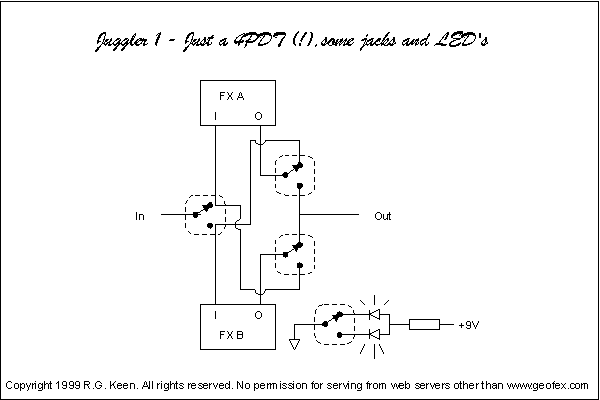Sunday, January 31, 2021
AND/OR Switching Part II: Active and Passive components
Sunday, January 17, 2021
AND/OR Switching System\\ Part 1
Part 1: The Gestalt
Saturday, January 9, 2021
Beginning with The End
There are a couple existing projects I want to finish up and others I want to update and expand on. In no particular order other than my thoughts at the moment, here's what I've got planned for the year.
1. The AND/OR switching system is under development, and is somewhat of a priority since I have a fetish for dual channel designs. Moreover, I think my future designs will require the use of micro controllers to accommodate the ideas I have in mind.
If I can get this to work, I'll document the process for those interested. For two-in-one projects it just seems like it would be a cool option to switch between A or B, A->B, and B->A in with a simple interface..
2. I will be revisiting the Solaris this year. Belton has a new brick coming out that should be interesting to work with. Its based on the Cool Audio multifx chip, but at least it doesn't require me to do any SMD soldering.
3. I have been wanting to do a tremolo pedal for so long and I think I have some ideas. Laowiz suggested I try out the Gristleizer, and I think I will start to breadboard that. I've seen some cool videos and of course the VCA/VCF modes fit nicely into my fetish :)
While learning more about microcontrollers, I may try and put out something for a
4. Modular Interfacing Longterm Fuzz is something I have been toying around with. Mostly to satisfy my crusade for the ideal fuzz for me. This will probably take the longest time to develop and may never be complete, but the basis of it will involve microcontrollers to simplify my life.
I don't want to get too far ahead of myself 4 projects for the year sound doable. The beginning always starts out strong, and right now since I have been drawing schematics and breadboarding most of December.
All along the way I'll put out some updates for the projects; the microcontroller work especially. I think it'd be nice to see simple microcontroller projects pop-up for other guitar pedal hobbyists out there.
Here's to a productive 2021
Best regards,
Bradford





